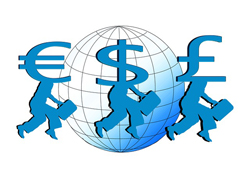 Do you plan to set up an e-commerce website, or sell goods and services to a global audience? If so, then it’s a good idea to consider providing users with the convenience of currency conversion on your site.
Do you plan to set up an e-commerce website, or sell goods and services to a global audience? If so, then it’s a good idea to consider providing users with the convenience of currency conversion on your site.
Currency conversion software tools let your prospective customers have the cost of an international currency transaction converted into their local currency when purchasing products on e-commerce sites. It also lets visitors and customers see the exact amount their credit card or PayPal account will be charged, expressed in their own home currency.
One great advantage of adding currency conversion to your website is that it lets customers view and understand pricing in foreign countries in their own home currency, and makes it easier for purchasers to work out their costs and expenses.
If your site is powered by WordPress, it’s easy to add currency conversion using a plugin to your WP website or blog, allowing your prospective customers to quickly calculate the cost of your products.
Currencyr – Currency Conversion Plugin For WP Websites
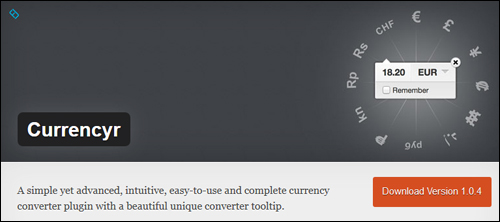
Currencyr is a simple yet advanced, intuitive, easy-to-use and complete currency converter plugin with a beautiful and unique converter tooltip. It’s also free to install and use on your WP website or blog.
Some of the many useful features of this useful plugin include:
- In-line conversion tool
- Supports various exchange rates providers, like Yahoo! & FoxRates
- WP-Cron task scheduler enabled
- Widgetized currency table and converter
- Can be integrated with various e-store plugins like WP-eCommerce and Shopp.
- Can detect local currency automatically
- Full support for language translations
Note: The Currencyr plugin needs your server to be running PHP 5.3.0 or later. Do not use this plugin if you currently have an older version of PHP installed on your server. Ask your web host to check and upgrade your PHP.
***
You can install the Currencyr plugin from your WordPress admin area by typing in “currencyr” into the Plugins search field and clicking the “Install” button …
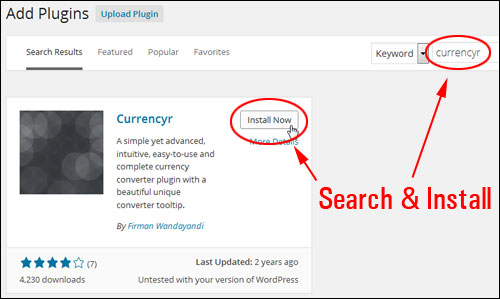
When the plugin has been installed and activated, you can access the plugin’s settings by choosing Currencyr from your WP admin menu …
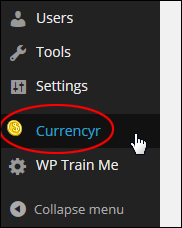
This takes you to the plugin settings section …
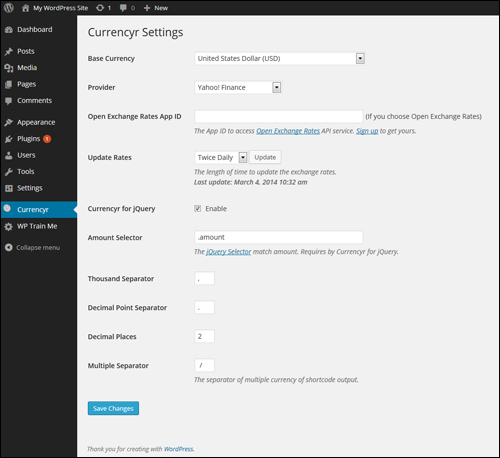
For example, you can choose your base currency from the ‘Base Currency’ dropdown menu if you prefer to use a different currency than the default option (USD) …
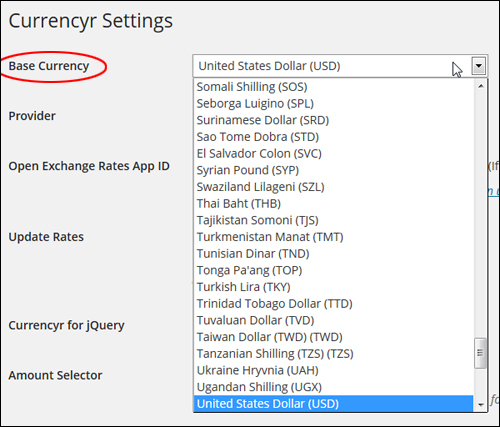
Similarly, you can choose which data provider you want to use from a dropdown menu. The default selection is ‘Yahoo! Finance’, but you can also choose another option, such as European Central Bank or Open Exchange Rates …

Note: If you choose Open Exchange Rates as your provider, you will need to enter an API (Application Programming Interface) ID …

You can specify how often you would like to update the exchange rates by selecting an option from the Update Rates drop-down menu …

The Currencyr plugin uses jQuery, which allows web developers to add things like animation effects to web applications (such as WordPress plugins).
Unless you have a reason to modify the jQuery settings, leave these as they are …

Configure the remainder of the plugin settings to suit your needs and click the ‘Save Changes’ button when finished …
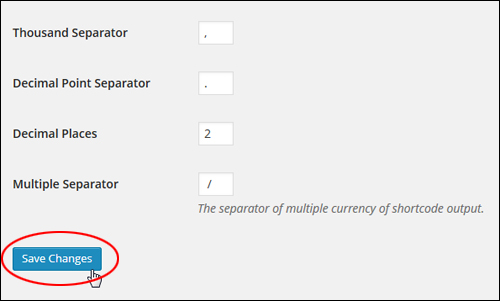
Once you have finished configuring your settings, you can add currency conversion to any WP post or page using shortcodes and widgets.
See the ‘Additional Plugin Notes’ section further below to learn more about using currency codes (e.g. USD, AUD, JPY, etc …) with the Currencyr plugin.
Currencyr Shortcodes
You can easily insert currency conversion into WP posts, pages and widgets without touching your web templates using shortcodes.
Below are some examples of currency shortcodes that you can add to pages and posts:
Let’s say that you sell a product for a set amount (e.g. $175) in US Dollars (USD), and you want to show this conversion amount in British pounds (GBP) on your product sales page.
To display this information, you simply need to add the following shortcode into your post or page …

Note: You can also display pricing in dollars and cents (e.g. 19.95, 29.95, 149.00, etc …)
The screenshot below shows how the shortcode looks when added to your page or post …
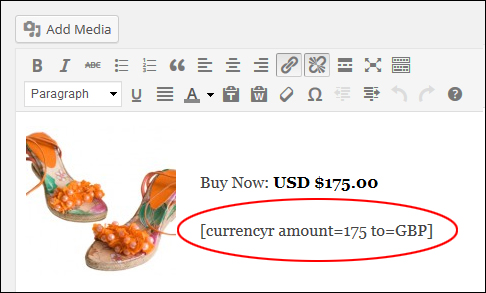
After publishing your post or page, your currency conversion will appear as shown below …
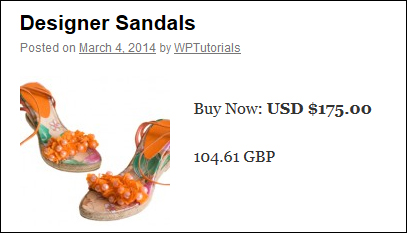
Using this example, let’s also display the same amount into different currencies.
To do this, use the shortcode below (add as many currency symbols as you like by using vertical pipes) …

The screenshot below now shows how the shortcode appears when added to a page …

After publishing your page, the converted currency amounts will then display as seen below …
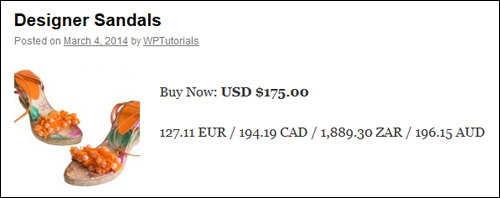
refer to the ‘Additional Plugin Notes’ section below to learn more about changing the currency separator symbol in this plugin.
Now, let’s say that you would like to select a different base currency than the one selected as your default.
For example, if you have set your default base currency as EUR and you have a section on your e-commerce pages targeted to non-European visitors (for example, Australia or Canada), you can change the base currency using the following shortcode …

You can see how the shortcode looks when you add it to a post …
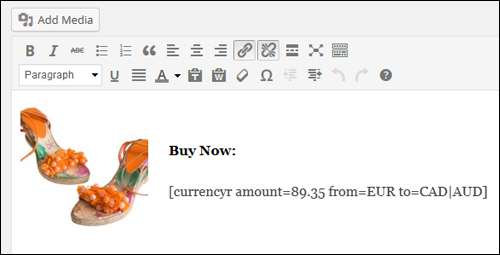
Once your information has been published, the converted currency amounts will then display like this …
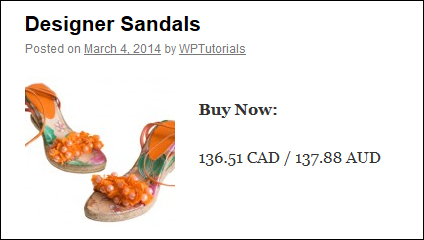
Widget
You can also add currency conversion to your website or blog’s sidebar menu using the plugin’s widget.
To add the currency converter to your sidebar area, choose Appearance > Widgets from the WordPress dashboard menu …
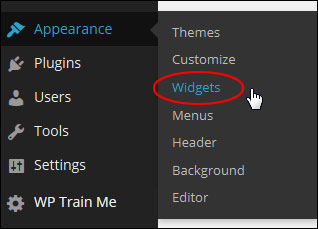
In the Widgets > Available Widgets section find the ‘Currencyr’ widget and drag it to the Active Widgets area …
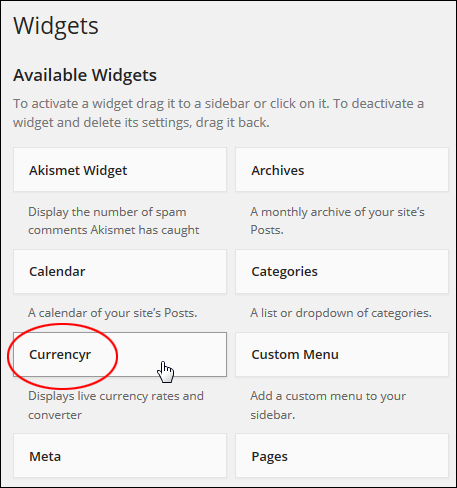
Configure the widget options as shown in the screenshot below (add the currency codes you want to display on your widget separated by commas), and click Save to save your settings …
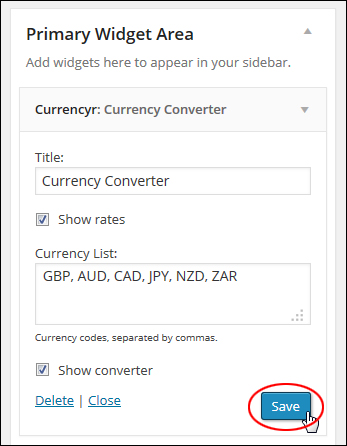
The currency conversion tool will now show on your site’s sidebar with the settings you have selected …
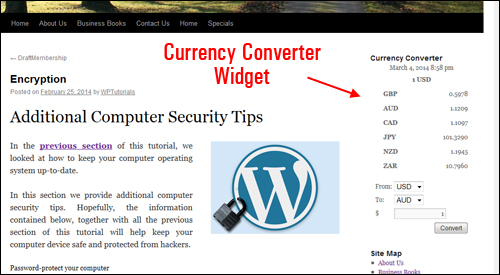
Additional Plugin Notes
Here are some additional notes and useful information about using the plugin.
Currency Separator
The Currencyr plugin allows you to specify a symbol of your choice to display as the currency separator when using several currencies.
You can select a different symbol in the ‘Multiple Separator’ settings section.
So, for example, using the default symbol “/” (forward slash) …

Displays your currency values separated by the forward slash as you can see in the screenshot below …
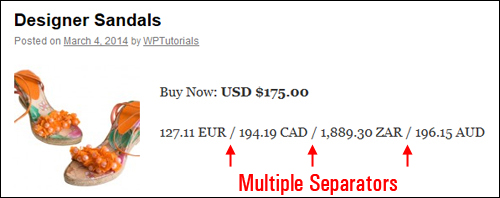
If you specify another symbol and update your settings …

Your web site visitors will see the new symbol used as the currency separator …
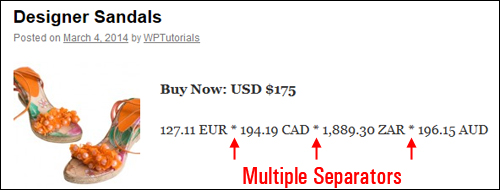
E-Commerce Software Integration
As described earlier, the plugin integrates with a number of WP-compatible e-commerce plugins like WooCommerce, Shopp and Easy Digital Downloads …
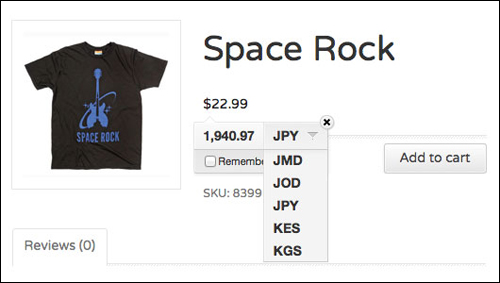
(image sourced from plugin site)
Congratulations! Now you can go and easily add currency conversion to your e-commerce web site.
To learn more about WordPress e-commerce plugins, see the tutorial below:
***
"Wow! I never knew there's so much to learn about WordPress! I bought one of the WordPress for Dummies three years ago, such authors need to be on this course!" - Rich Law, Create A Blog Now

